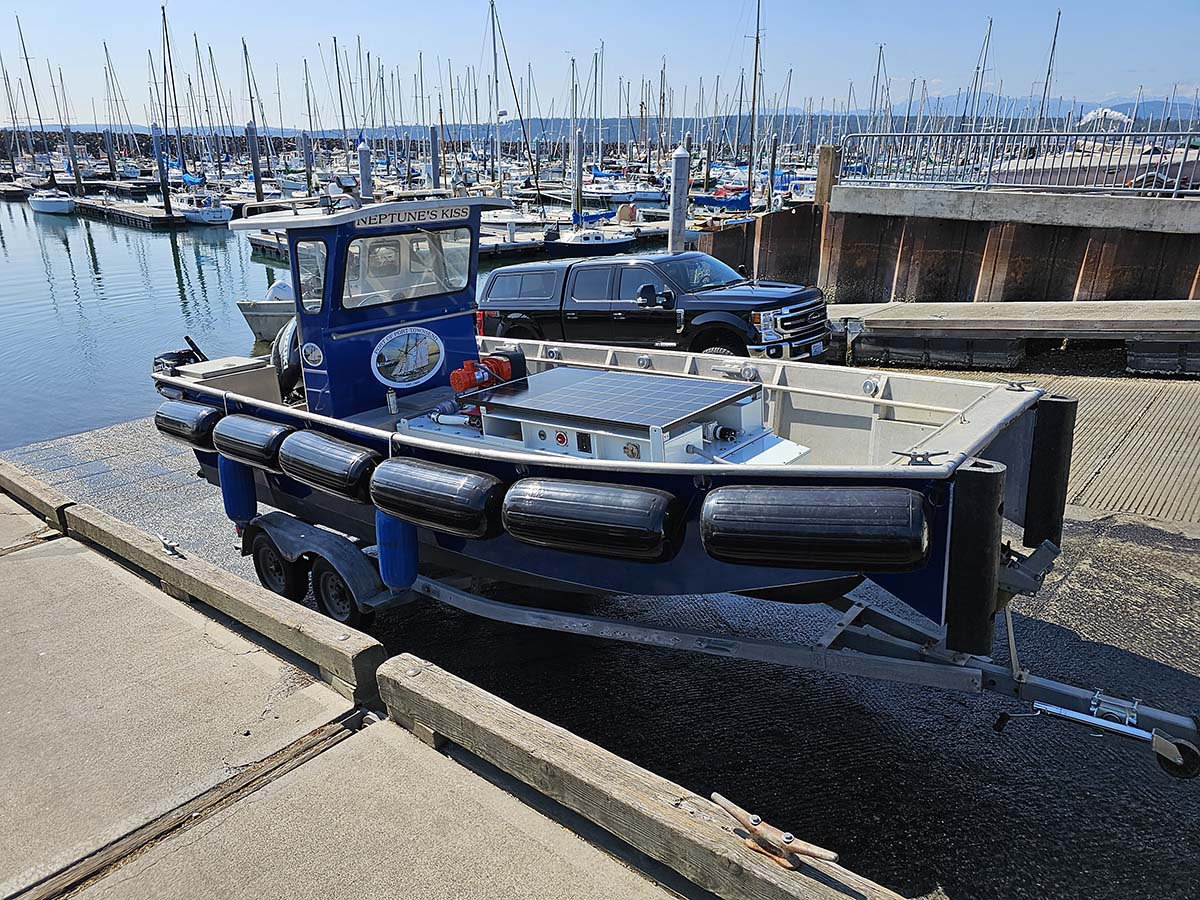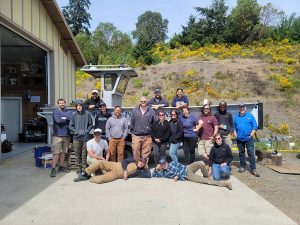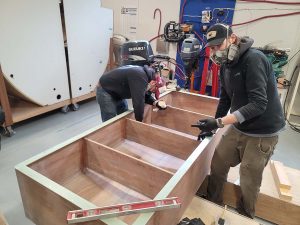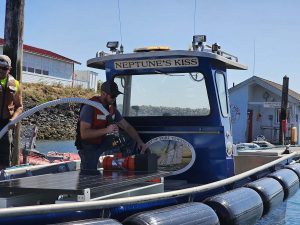
Solar-Powered Pumpout Boat Takes Eco-Friendly a Step Further
Published on February 27, 2024The Clean Vessel Act (CVA) was established in 1992 allowing the Secretary of the Interior to issue grants to states to be used to install pumpout stations and waste reception facilities to dispose of sewage from recreational boaters. Since that time marinas across the country have installed pumpout systems and boaters have become accustomed to using them. The program is currently up for its periodic review and while big changes are not anticipated, smaller changes have worked their way into the world of pumpouts with CVA support.
The introduction of pumpout boats came about several years ago, but today, with help from the Northwest School of Wooden Boatbuilding, the early iteration of a pumpout vessel has moved into the modern era.
Solar Pumpout Boat
Aaron Barnett, program specialist at Washington Sea Grant, launched Pumpout Washington in 2012. The program aims to teach boaters the safe and legal ways to treat onboard sewage. It’s the education and outreach component of the Clean Vessel Act and as such, has led Barnett to spend a lot of time touting the use of mobile pumpout boats. “I encourage innovation with the boats with the use of solar power or making the boats zero emission. It’s a double benefit of keeping the waters clean by removing the raw sewage and reducing emissions from traditional engines,” he said.
Barnett first learned of zero-emission pumpout boats from a project in Connecticut. Introduced in Connecticut in 2018, the first solar powered boats were built by Pilots Marina. The boats, still operating today, are 11-foot stand-up console workboats with solar panels mounted on the deck and electric Raymarine engines. Pedrick Yacht Designs in Newport, Rhode Island took the solar concept a step further, designing a 25-foot vessel with 400-gallon holding tank that ran on twin 40hp Torqeedo electric engines powered by solar. Now the solar powered pumpout boat has made its way west with Washington becoming the second state to embrace the more climate friendly technology.
Barnett shared his findings on zero emission boats with Washington’s Clean Vessel Act program manager to confirm CVA funds would be available for such a project. From there the concept began to take shape.
Lead systems instructor at the Northwest School of Wooden Boatbuilding, Kevin Ritz, was intrigued by the opportunity to have students build a pumpout boat. The availability of CVA grant money for construction made the program come to life. “I’m always looking for interesting real-world projects using cutting-edge technology. There are exciting things out there with energy storage and electric propulsion. I wanted to build a pumpout boat for environmental reasons, but I was keen to do electric propulsion, so I designed the electrical systems including the pumpout module,” Ritz said.
His team of students constructed the hull, deck, tank, and pilothouse and installed all the needed equipment. “It was a good project from the boatbuilding side because we could incorporate many techniques of wooden boat building. We incorporated a variety of techniques, so the project checked all the cool educational boxes. For example, we had parts CAD cut by a local business, and students could see how to take drawings and have this company give back precise wood components for us to assemble,” Ritz said.

The vessel, named Clean Bay, is a wooden boat at its core but maintains a heavy coverage of fiberglass and epoxy to give it the strength to hold the pumpout unit— an Edson 120 single diaphragm pump with 500 gallon holding tank. Four Torqeedo lithium batteries and two Renogy 300-watt, 12V monocrystalline solar panels supply the power.
To give the students experience in installing the latest in electronics, the boat includes a VHF with loud hailer, a chart plotter, depth sounder, navigation lights, and a communication center and systems monitor. Side power bow thrusters along with a narrow beam, enable the boat to maneuver in the tight spaces needed to reach boats in slips.
When the holding tank is empty, the boat relies on approximately 90 gallons of ballast water and 1000 lbs of lead shot in the bilge to keep its stability. The boat is stored and operated by the Port of Ludlow and is gaining recognition because it is an attractive boat that looks more motorsailer than work boat. “It’s a beautiful showpiece but a functional workboat. So much of the work our students do is strictly recreational, so it was rare to do a project that was for service. The students can come back and see it in action,” Ritz said.

Innovation Extreme
News of the zero-emission pumpout boat built by students spread. The Port of Port Townsend was interested in the solar powered boat as the community has been embracing solar for its public buildings. They wanted to tap the NWSWB students again but offered a new twist. They had an existing workboat; they just needed a pumpout unit that could be placed on it when needed.
While pumpout boats are the utmost in convenience for boaters, having a workboat transformed to a pumpout boat has traditionally meant a marina or harbor losing the flexibility of a true workboat. Ritz and his students imagined, designed, and built the first solar powered pumpout skid unit which enables the pumpout unit to be placed on the boat only when needed. The rest of the time, the workboat can be used for any other need.
“The Port told us they had a workboat and asked what could be done. I took measurements, looked at the boat in terms of stability, and designed a module that would fit on it,” said Ritz.

The self-contained module has a 200-gallon waste tank, high-capacity pump, hoses, lithium iron phosphate batteries, and solar and AC charging equipment. Ritz again brought in the latest technology with a battery management system that monitors all activity of the power system and sends alerts directly to Ritz’s phone. “It can pump for a long time on one charge. Certainly, more gallons than the Port is likely to do in a day. We again combined real-world need and modern technology, but it’s the ability to use the boat for activities other than pumpouts that makes this project truly unique,” he said.
“We’re hoping for the opportunity to do more. We can custom build to accommodate nearly any vessel. We need deck space independent and autonomous from the rest of the vessel so the unit can be secured to the deck. In terms of capacity and shape, the modules are custom made to work on any boat, as long as it can haul the gallons of waste that the operator wants to haul,” Ritz said. “We learned a lot of lessons through our last two projects that we’re anxious to incorporate on the next one.”
| Categories | |
| Tags |






